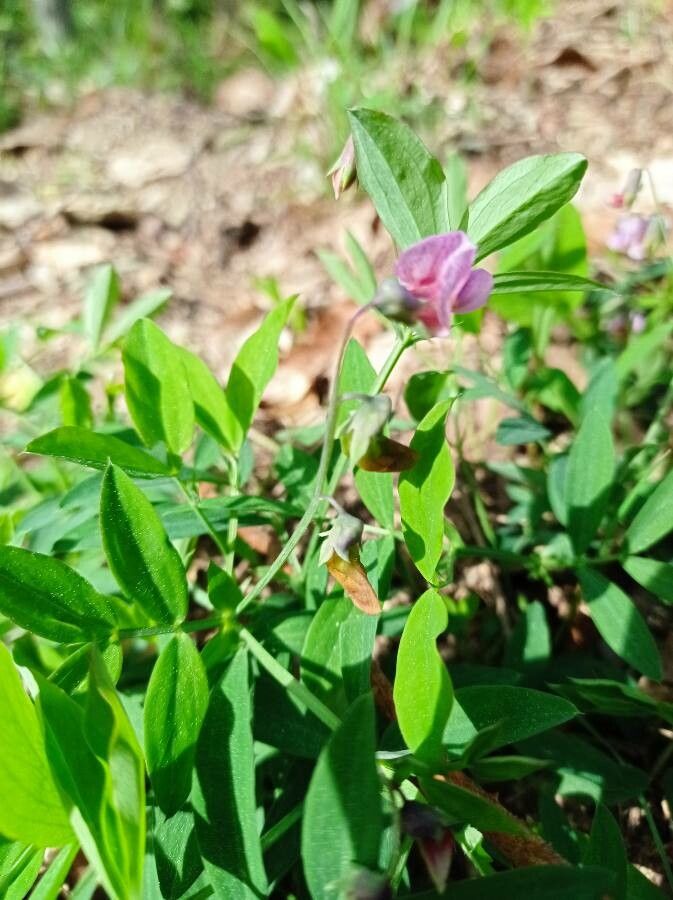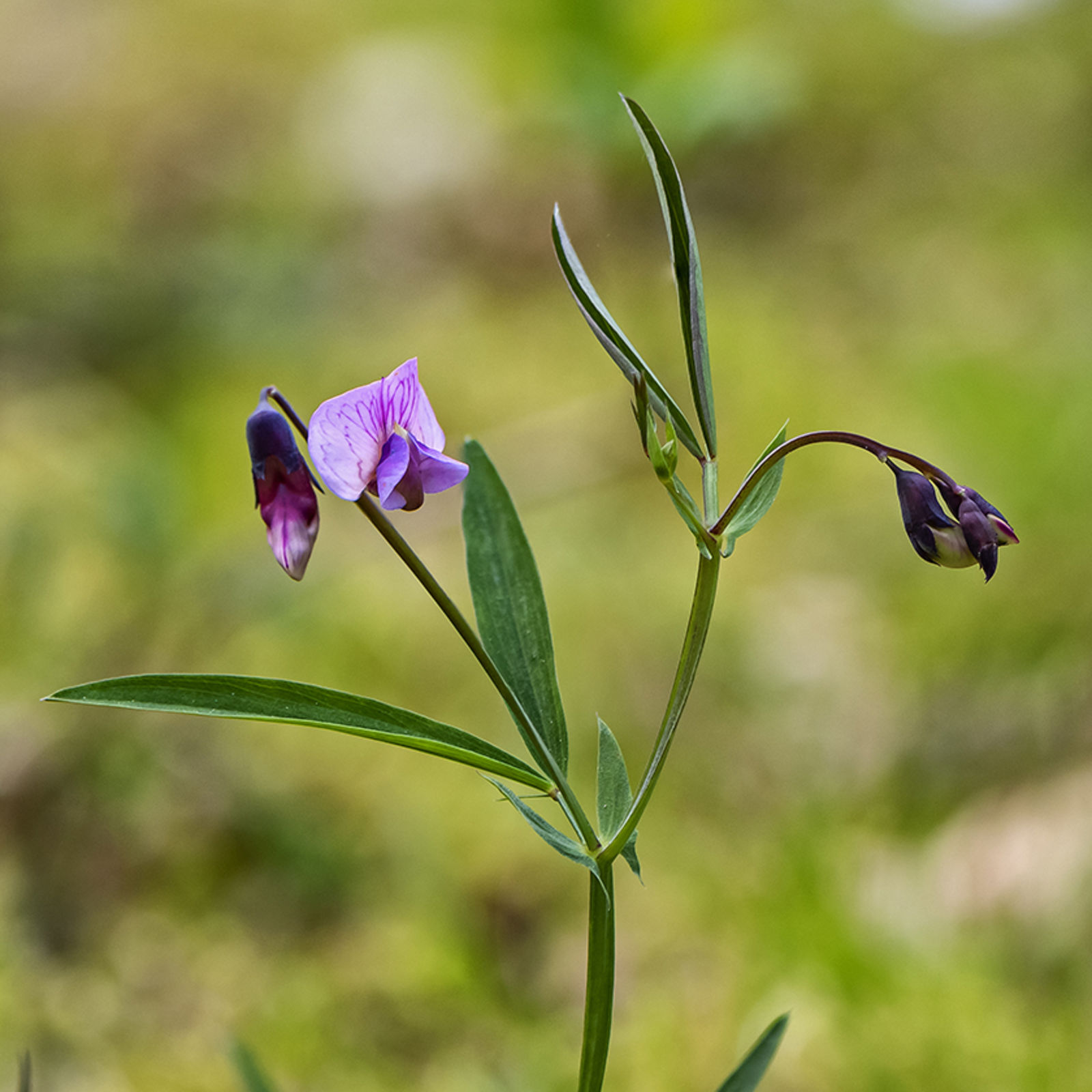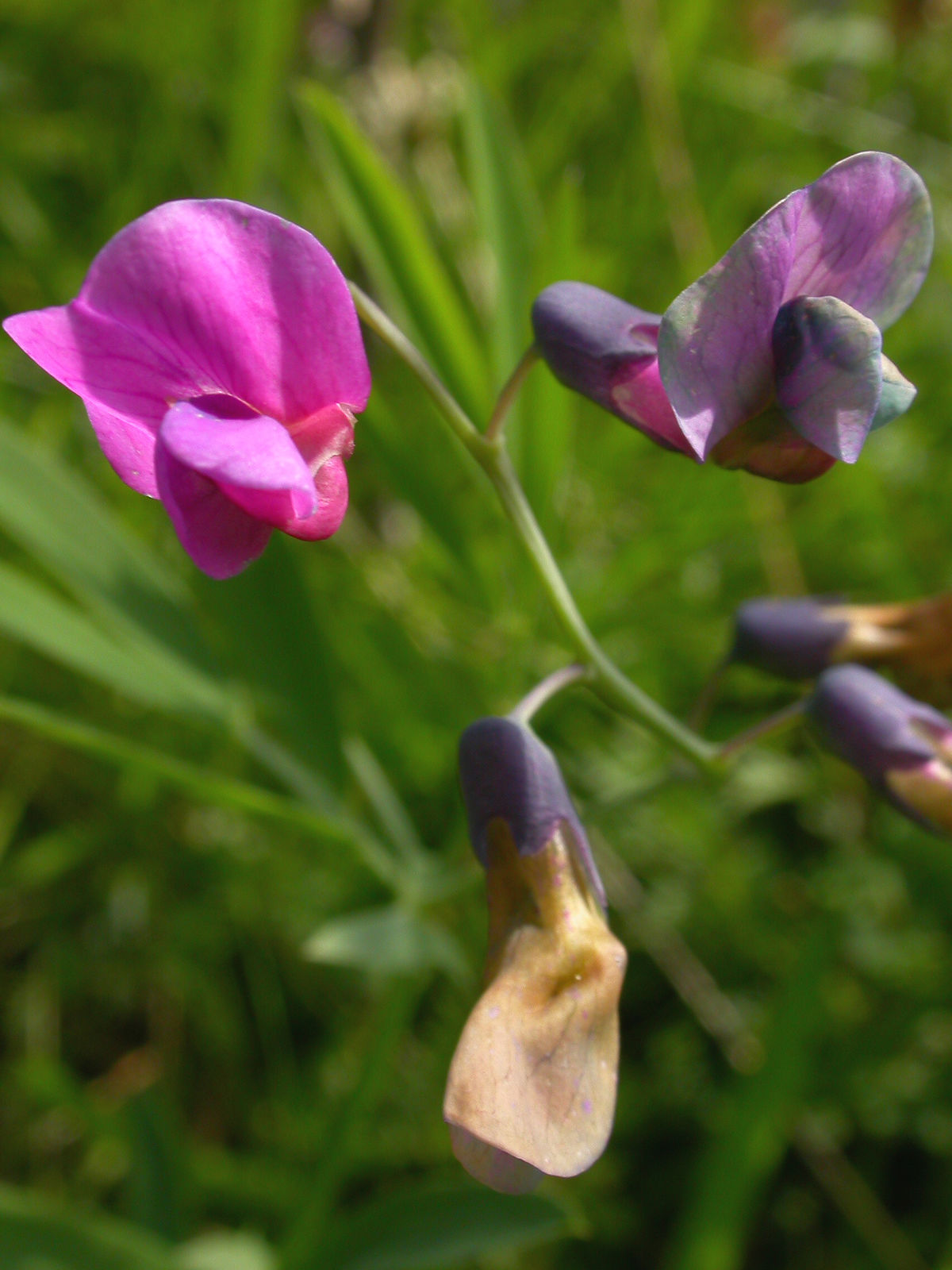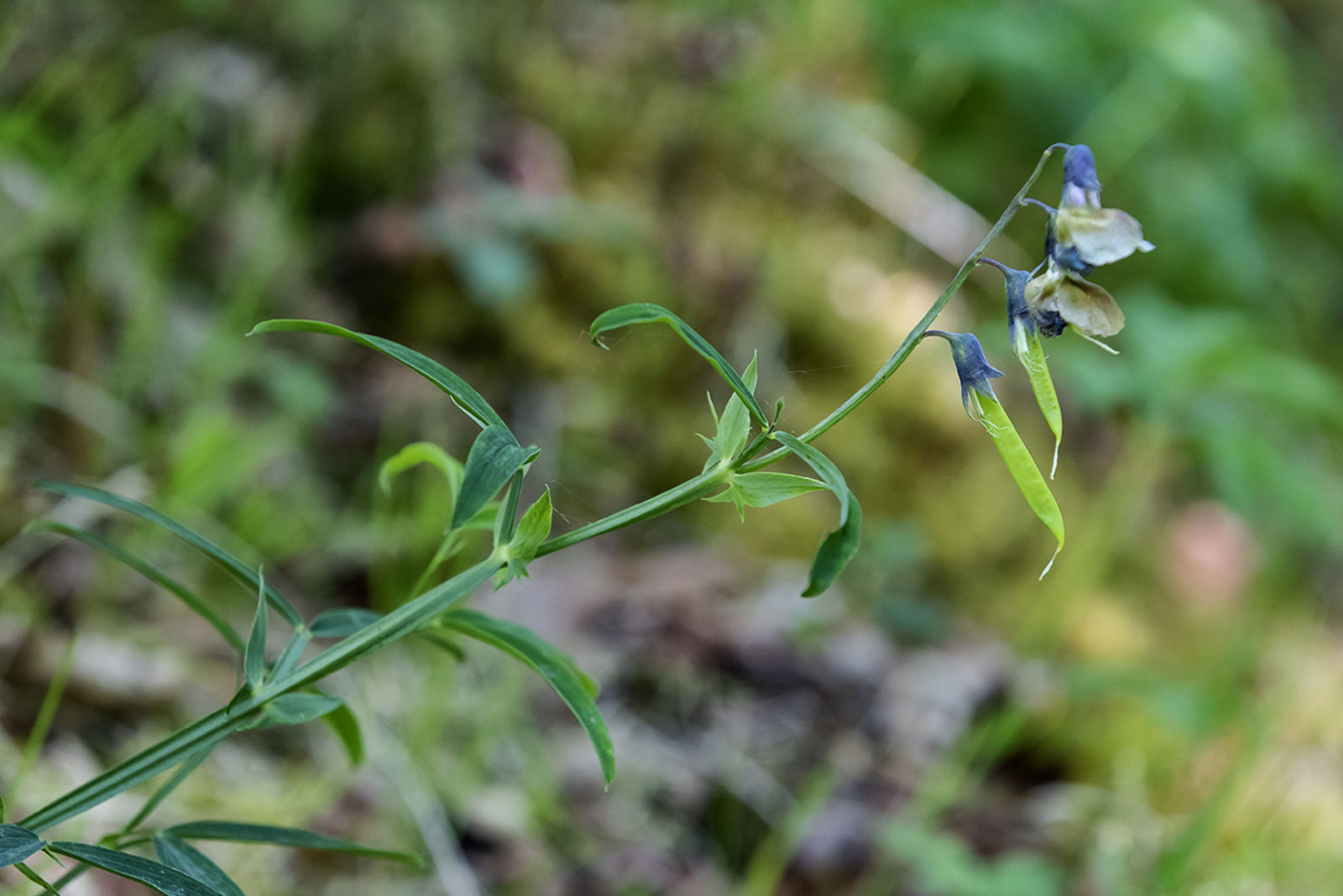Hedge Pea
lathyrus linifolius
Also known as: ["Field Pea","Wild Pea"]
Overview
A perennial climbing plant native to Europe, known for its small, pea-like flowers and compound leaves.
Benefits & Perks
["wildlife attractant (bees, butterflies, birds)","low maintenance","fragrant flowers"]
Botanical Classification
| Phylum: | Magnoliophyta |
| Class: | Magnoliopsida |
| Order: | Fabales |
| Family: | Fabaceae |
| Genus: | Lathyrus |
| Botanical Name: | Lathyrus linifolius |
Plant Characteristics
Basic Information
- Category: Flowers
- Suitable Location: garden bed or container in a location with good air circulation
- Suitable For:
- Is Weed: No
- Allergenicity: low
Environmental Needs
- Climate: {"temperatureRange":"0–30°C"}
- Hardiness: {"zones":"4–8"}
- Misting: rarely required, only if ambient humidity is very low
- Drainage: Fast-draining to prevent waterlogging.
- Soil Type: Well-draining, loamy soil with added organic matter; can tolerate slightly sandy or clay soils if amended.
Maintenance Level
- Maintenance Level: low
- Toughness Level: moderate
- Pruning Frequency: Light pruning can be done as needed; major pruning after flowering or in late winter/early spring.
- Pruning Intensity: Moderate; remove up to one-third of the plant if necessary, but avoid excessive pruning during flowe
Care Details
Ideal Sunlight Coverage:
Full sun to partial shade; 6–8 hours of direct sunlight per day, with some afternoon shade in hot climates.
Sunlight Tolerance Tips:
Acclimate plants gradually to intense sunlight; protect from harsh afternoon sun to prevent scorching; adjust placement based on indoor/outdoor conditions.
Care Requirements
Care Difficulty
easymoderate
Sunlight
full sun to partial shade
Rotate plant for even light exposure; use sheer curtains to filter intense sunlight; provide shade during peak heat.
Watering
every 7–10 days during active growth, reduce in winter
Water thoroughly but infrequently; ensure proper drainage; avoid wetting foliage to prevent fungal issues.
Soil
well-drained, loamy soil with moderate organic content
pH: Slightly acidic to neutral (pH 6.0–7.0).
Use a mix of garden soil, compost, and perlite; avoid heavy clay soils; ensure good drainage to prevent root rot.
Temperature
Prefers cool to moderate temperatures, ideally 60–75°F (15–24°C); tolerates cooler nights but avoids extreme heat.
Avoid sudden temperature fluctuations; protect from drafts; maintain consistent humidity levels.
Fertilizing
every 4–6 weeks during spring and summer
Apply fertilizer to moist soil to prevent root burn; flush soil occasionally to remove excess salts; reduce feeding for flowering plants.
Propagation
Methods
Stem cuttings or division; stem cuttings are more common for home growers.
Step-by-Step Propagation Guide
- Take a 4–6 inch cutting with at least two nodes.
- Remove lower leaves.
- Dip in rooting hormone (optional).
- Plant in moist medium.
- Keep warm and humid.
Best Time: Spring or early summer when the plant is actively growing.
Environment
Warm, humid environment with indirect light; maintain consistent moisture without waterlogging.
Medium
Well-draining potting mix with perlite or sand; can also be propagated in water initially.
Hormone
Rooting hormone is optional but recommended for faster root development.
Timeline
Roots typically develop in 3–6 weeks; new growth may appear in 2–3 months.
Tools Needed
Pruning shears, rooting hormone, small pots, well-draining medium, plastic wrap or propagator.
Quick Tips
Use healthy, non-flowering stems; maintain high humidity around cuttings; avoid direct sunlight during rooting.
Pruning & Repotting
Pruning Guide
Method
Use clean, sharp tools; make cuts just above a leaf node or bud; remove dead or crossing branches.
Pruning Plan
Prune to maintain shape, encourage bushier growth, and remove dead or diseased parts; also prune after flowering to promote new blooms.
Tools
Pruning shears, sharp knife, disinfectant for tools.
Checklist
Disinfect tools; prune dead or damaged growth; shape the plant; remove spent flowers; avoid over-pruning.
Repotting Guide
Best Season
Early spring before the active growing season begins.
Pot Size
Choose a pot one size larger (e.g., 2–3 inches wider in diameter) than the current one.
Method
Remove the plant gently; trim any circling roots; place in a slightly larger pot with fresh, well-draining soil; water thoroughly after repotting.
Suggestions
Repot every 2–3 years or when the plant becomes root-bound; beneficial for rejuvenation and fresh soil.
Checklist
Select appropriate pot size; prepare fresh soil mix; gently remove plant; trim roots if needed; repot and water.
Advanced Care Tips
Watering Mastery
Watering Checklist
Check soil moisture before watering; water deeply; ensure drainage; avoid overhead watering.
How to Apply Water Properly
Water at the base of the plant, ensuring moisture reaches the root zone; allow excess water to drain away; water early in the morning to minimize evaporation and fungal growth.
Watering Schedule Tips
Water deeply once the top inch of soil feels dry; reduce frequency in winter to prevent root rot.
Soil Improvement
Add compost or well-rotted manure for fertility; incorporate perlite or sand for drainage; ensure good aeration.
Temperature Stress Management
Signs of Temperature Issues
Wilting, yellowing leaves, stunted growth, or bud drop in response to extreme temperatures.
Cold Stress
Low temperatures can slow growth and cause leaf discoloration; prolonged cold may lead to frost damage.
Solution: Protect from frost with a cover or move to a sheltered location; ensure good air circulation to prevent cold-induced mold.
Hot Stress
Excessive heat can cause wilting, leaf scorch, and reduced flowering; may lead to dehydration.
Solution: Provide shade during peak heat; increase watering frequency; use mulch to retain soil moisture.
Fertilizing Guide
Fertilizing Checklist
Use diluted fertilizer; apply during active growth; avoid winter feeding; flush soil periodically.
Fertilizing Method
Use a balanced, water-soluble fertilizer diluted to half strength; fertilize every 4–6 weeks during the growing season (spring to early fall); avoid fertilizing in winter.
Common Problems & Solutions
Toxicity Warning
Cats
ToxicCats are highly susceptible to the neurotoxic effects of Lathyrus linifolius. Ingestion can lead to severe neurological damage, including motor neuron degeneration and muscle weakness, which may be irreversible.
⚠️ Symptoms:
🌿 Toxic Parts:
⚡ Toxic If:
if eaten
Dogs
ToxicThe neurotoxic compounds in Lathyrus linifolius can cause severe neurological damage in dogs, leading to motor neuron degeneration and muscle weakness. Prolonged exposure or ingestion can result in permanent disability.
⚠️ Symptoms:
🌿 Toxic Parts:
⚡ Toxic If:
if eaten
Humans
ToxicLathyrus linifolius contains neurotoxic amino acids that can cause severe neurological damage upon prolonged or excessive consumption. The toxins interfere with normal nerve function, leading to motor neuron degeneration and muscle weakness.
⚠️ Symptoms:
🌿 Toxic Parts:
⚡ Toxic If:
if eaten
Frequently Asked Questions
Q: Is Lathyrus linifolius toxic to pets?
A: Yes, it is mildly toxic to dogs and cats if ingested.
Q: Does this plant require full sun?
A: It prefers partial shade to full sun and can tolerate some shade.
Q: How often should it be watered?
A: Water moderately, allowing the soil to dry slightly between waterings.
Quick Reference
| Family: | Fabaceae |
| Care: | easy |
| Light: | full sun to partial shade |
| Water: | every 7–10 days during activ |
Get Expert Care Tips
Download the Plantious app for personalized care reminders and plant identification!
Google Play App Store








